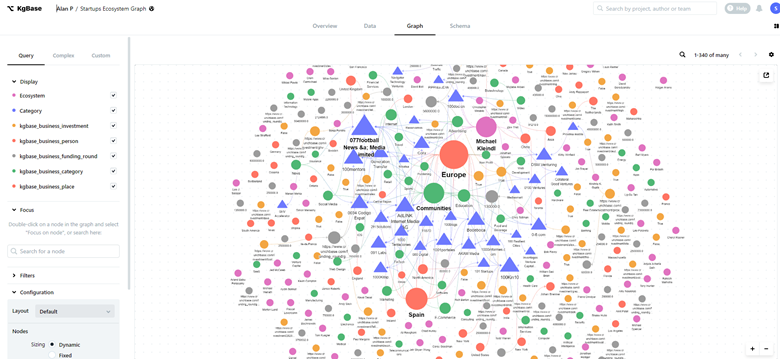Discover How Scalable Databases Can Be Utilized Without Coding to Boost Your Service Workflow
In today's hectic business setting, the capability to take care of and evaluate information efficiently is paramount. Scalable data sources, specifically when coupled with no-code services, provide a transformative strategy that empowers non-technical customers to streamline procedures. By utilizing devices that require no coding know-how, companies can improve their operational capacities while minimizing dependancy on IT resources. The actual inquiry exists in understanding how these services can be tailored to details service needs and what potential difficulties may arise in their application. Checking out these facets can brighten the path to functional excellence.
Recognizing Scalable Data Sources
Scalable databases are vital for modern company procedures, enabling organizations to successfully take care of enhancing volumes of data without sacrificing performance. These databases are made to adjust and grow to the transforming demands of a service, guaranteeing that they can handle larger datasets and even more complex questions as organizational requirements progress.
Understanding scalable databases entails recognizing their 2 main kinds: upright scaling and straight scaling. Vertical scaling, or "scaling up," involves including even more power (CPU, RAM) to an existing web server to improve efficiency. On the other hand, horizontal scaling, or "scaling out," requires including more servers to disperse the lots, which frequently results in higher versatility and mistake resistance.
One more essential facet is the style of scalable data sources, which can be either relational or non-relational. Relational data sources, such as MySQL and PostgreSQL, are structured and use SQL for inquiries, while non-relational databases, like MongoDB and Cassandra, use more versatility with unstructured information.
Inevitably, understanding scalable data sources is crucial for companies aiming to utilize information as a critical possession, allowing them to stay affordable in an increasingly data-driven atmosphere.

Benefits of No-Code Solutions
Opening the capacity of no-code services encourages services to enhance operations and improve productivity without the need for extensive programs knowledge. These systems allow non-technical customers to create, change, and manage data sources easily, therefore democratizing accessibility to modern technology across groups.
Among the main benefits of no-code options is their rate of implementation. Companies can rapidly release applications and automate procedures, dramatically lowering the time spent on growth cycles. This dexterity allows companies to react quickly to market changes and customer needs, promoting an affordable edge.
Furthermore, no-code platforms decrease reliance on IT divisions for day-to-day jobs, enabling technological teams to focus on even more complex tasks that require specialized skills. This shift not just optimizes resource allotment however additionally advertises technology within the company.
Cost-effectiveness is an additional benefit, as no-code remedies can reduce growth and maintenance costs. By lessening the demand for coding competence, business can harness the capacities of their existing labor force without the overhead of working with additional employees.
Popular No-Code Data Source Equipment
The increase of no-code remedies has actually led to the development of different database tools that accommodate businesses seeking performance and ease of access. These tools empower users with limited technical experience to produce, manage, and adjust databases perfectly.

Caspio sticks out for its capability to build internet applications without any type of coding. It allows services to produce durable data sources and release applications quickly, providing to different market needs. Propensity provides straightforward user interfaces and powerful data administration capabilities, making it possible for organizations to construct custom-made applications tailored to their operations.

Use Situations in Company Operations
How can companies leverage database tools to enhance their procedures? Scalable data sources provide companies with effective capacities to handle and examine information without the demand for extensive coding knowledge. These tools can improve different organization processes, inevitably leading to enhanced efficiency and productivity.
One popular use case is customer relationship monitoring (CRM) Services can utilize scalable databases to track consumer interactions, preferences, and responses, allowing customized communication and far better service. By centralizing this details, groups can work together more effectively and reply to consumer requirements in real-time.
An additional substantial application is inventory monitoring. Firms can utilize no-code database tools to keep track of supply levels, track deliveries, and projection need. This makes certain optimum stock degrees, minimizes waste, and decreases stockouts.
In addition, task administration can take advantage of scalable databases by permitting teams to manage jobs, due dates, and resources in an unified system. With real-time updates and data visualization, task supervisors can make enlightened choices.
Starting With Application
Implementing scalable databases in organization operations requires an organized technique to make sure effective integration and application. The initial step is to conduct a detailed demands evaluation, identifying particular business needs, information types, and expected development patterns. This foundational understanding will certainly direct the selection of the appropriate database remedy.
Next, pick a straightforward, no-code database system that straightens with your operational objectives. no-code. Several modern services supply intuitive interfaces, enabling non-technical users to manage information effectively. After selecting a system, establish a clear data architecture that lays out exactly how information will be organized, accessed, and preserved
Training is essential; ensure that group participants are outfitted with the needed skills to make use of the data source. Take into consideration supplying tutorials or workshops to acquaint personnel with the system's capabilities.
Verdict
In conclusion, the assimilation of scalable databases via no-code solutions offers significant benefits for service operations. Inevitably, leveraging these technologies can lead to boosted efficiency and operational effectiveness, positioning services for sustained growth in a competitive landscape.
One popular no-code database device is Airtable, which incorporates the capability of a spreadsheet with the power of a database.Just how can companies leverage database devices to improve their operations? Services can make use of scalable databases to track client interactions, choices, and feedback, making it possible for individualized interaction and better solution.Implementing scalable data sources in business procedures calls for a structured method to make certain effective combination and utilization.In final thought, the assimilation of scalable data this page sources through no-code services offers substantial advantages for company operations.